Kenn Taylor reflects on New Brighton in all its colour, sugar and decay. With photos by Kenn Taylor and Denise Courcoux.
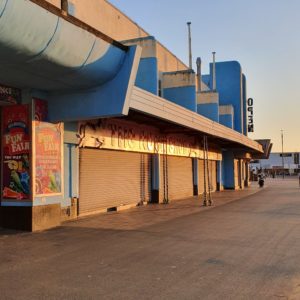
Our Day Out. A place of colour. And what colour. The vivid orange of the Golden Goose arcade. The deep saltwashed blue of the folding RNLI doors. The flaking yellow and green of the New Palace. Its canopied row of smiling plastic signs screaming sugar-sparkling doughnuts, cold ice cream and rubbery hot dogs.
The trilling lights and honking, metallic din of the Bright Spot. Enticed in to feed 2p’s to the ever smoothly rolling pushers in the hope of a tide of copper. Then through to the dark and exciting New Palace with its sparking Dodgems and fast clanking Wurlitzers. The bowling alley next door, even in the 90s still not equipped with computers. Instead, overhead projectors, pencil and paper to score.
Devouring the colour and the sugar. Behind the zinging orange plastic though, the tiredness, the wear, the lack of the New in New Brighton. Growing up in 1980s Merseyside, decay was too often part of the everyday. Eating hot dogs in a shelter long since seen a lick of paint. Watching crazy golf balls loop through elaborate creations scored with cracks and rust. Up the steep streets away from the front, rows of empty shops long before such things became a national concern. The extinguished neon of The Chelsea Reach nightclub. A vague memory of the white walls of a large swimming pool, just before it went to the wrecking ball. The striking tiled finger-pointing arrow outside a shuttered public toilet always staying in the mind for some reason.
This town was built by what we’d call now a property developer for money, borrowing its name from its southern forebear. A segment of the Wallasey. The ‘island of the Welsh’. Out on the edge. End of the line. Tales from my parents of a pier, a ballroom, a ferry, a big funfair and the largest open air pool in the world. Now in place of all that, just a concrete adjunct, a lumpy park and a patch of wasteland. Stories of the Good Old Days I loved as a child, then as a teenager came to resent. The past offered nothing to the young. The present very little. The future was uncertain. This is a feeling that would grow familiar to more and more of the UK as time passed, but back then, it was contained to parts of it like ours. Why was everything so run down, would it ever get any better?
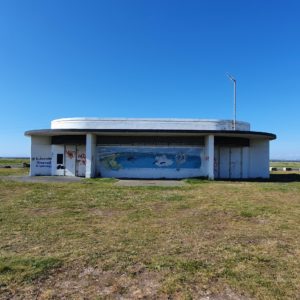
As a teenager the seaside still offers Our Day Out, but with different motivations. The ice cream and the arcades continue to attract, but now we hang out on our own. Looking to the expansive sky and sea. Wondering if our lives can be anything other than what they’re expected to be. Far horizons for people given narrow ones. Enjoyment tempered by a self-consciousness that only illicit access to alcohol can reduce. Then a ride back on the dodgems unlocks something deeper. Watching The Beach, its exotic locations and privileged characters seeming as remote as anything set on an alien planet. Good soundtrack though. We’re told Things Can Only Get Better. The cinema closes soon afterwards. ‘Investment’ gets mentioned in the local papers. Artist impressions of Things That Never Happen or Not Like They Were Supposed To. A record fair in an old hotel makes hearing new albums more affordable. The hotel too closes soon afterwards.
Taking an interest now in broader things. Looking beyond those horizons. Realising with surprise that people from across the globe look at pictures of New Brighton. Taken by Martin Parr. In almost every general photographic textbook published. Those bright colours from memory preserved, even brighter. The yellow sand, the long blue sky. The dripping red sauces on hot dogs and ice cream. The rubbish too, and the decay. All captured for posterity. This brings some joy. How cool is that? A place so close by, captured in the period of my childhood, world famous in The History of Art. But then, beginning to realise that many of the people consuming these images are laughing at us, not with us. That these pictures miss some of the warmth, the fun. What that colour offered to people without the means to travel further. Realising that what they are seeing has been framed in a particular way by an outsider. I begin to understand the power of images. The power of stories. And the power held by the narrow selection of people who control the images and the stories.
Later, I also learn of the New Brighton images of Tom Wood. A photographer who stayed for years and understood the grain of the place. Around the same time, Colin Vearncombe, better known as Black, captured New Brighton rendered in dreamy monochrome in the video for his song ‘Wonderful Life’ directed by Gerard de Thame. Cutting between the dignity and joy local faces and the sheer expansiveness of this corner of Merseyside. The ice white lighthouse against a dark estuary.
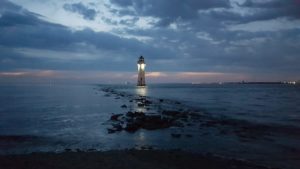
An adult, almost. Things Didn’t Really Get Better but They Did Change. The marine lake shrinks and a retail park is built. It has no romance but shops that people use. The swimming pool never comes back. Bad art is installed. A new cinema opens. The theatre for the old folks expands across the ruin of the Crazy Golf. The Chelsea Reach becomes flats. There’s money enough again now to paint the shelters. Things look tidier. The bowling alley remerges with computers. As shelf stackers, we have our Christmas Do in there and someone sides shirtless down the polished lane. We will not be welcomed back. Things are new, but they’re boxy, cheap. The colour seems to have drained away to leave white metal sheds and sheet glass. A thin veneer, like so much was then. A vague attempt at being respectable for those who live in high apartments beyond the station.
Then, almost as if it never left, austerity returns. The dreams of renewal fade. The public sphere withdraws. Things close down. For the want of money, the shelters begin to flake again. Weeds grow tall in cracks. Invest in Property they say. Flats are all that is built. Some of the new shops and restaurants begin to evacuate the retail park as the tide of chainstore expansion recedes.
I live on the other side now. Our Day Out now involves a bike and a ferry and a bike again, along the long promenade from the chemical tanks of Seacombe and past the memorial to those who died digging the cross-river tunnels. Old enough at this point for some of my own nostalgia. This used to be here, this was like that. I cannot say it was better in the past though. I was younger and I knew less. But I know this place deserves more, this world-famous subject of photography. Martin Parr opens his foundation in wealthy Bristol. Across the water giant red giraffes raise up. Seen through the heat haze of the day then starkly illuminated at night. The promise of this estuary being a centre of World Trade again. Waiting for a Golden Goose. When the boat comes in. It hasn’t yet.
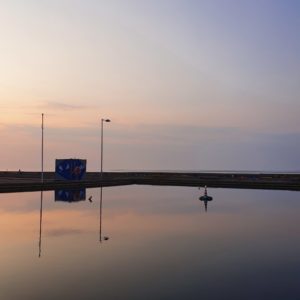
I move further away, but return often. Now with my own child. Then a local guy with more vision than 2,000 consultants combined decided things must change. Importantly, he also has the money and time for change. Empty shops re-open. Venues, pubs, markets. People take notice. Murals and street art go up, better than the bad art from the regeneration quangos. People take and share pictures, not of litter, but of painted buildings. The colour returns. There is something New in New Brighton.
Down on the waterfront though, The New Palace, the heart of the promenade, faces demolition. Still not enough money, not enough will. Decay continues to hover in the background. As ever round here, change for the better seems fragile.
This place means more than you can imagine. It is far more than a footnote in art history. It’s still, as it’s always been, Our Day Out.
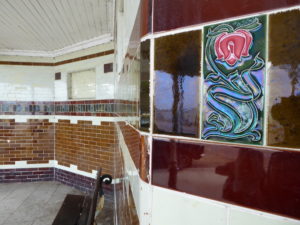
*
Kenn Taylor is a writer and creative producer with a particular interest in culture, community, class and place. He was born in Birkenhead and has lived and worked in Liverpool, London, Bradford, Hull and Leeds. His work has appeared in a range of outlets, from The Guardian and City Monitor to Elsewhere Journal and Liverpool University Press. Visit his website here.